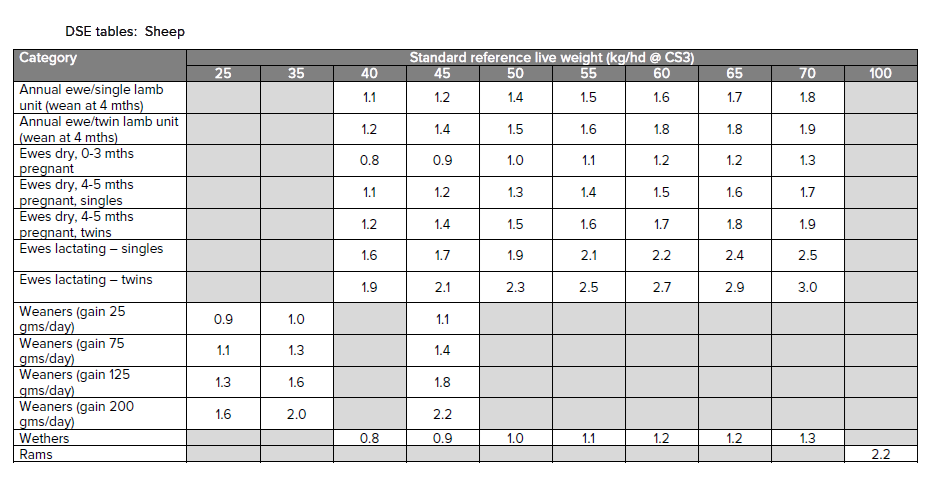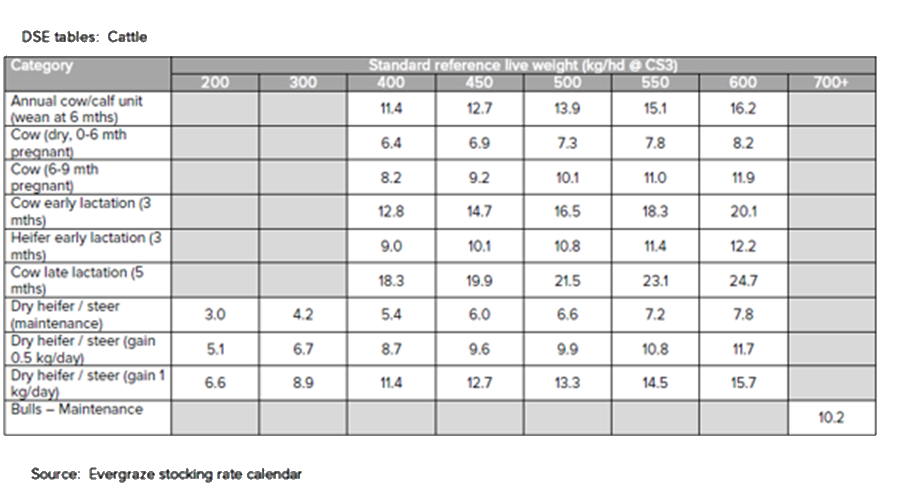Step 1: Paddock information
Instructions
-
Provide information about your paddock by filling out the fields below
-
Key values that impact the calculator:
-
Soil pH buffering capacity based on organic carbon and clay content (derived from soil texture)
-
Enterprise type
-
Current pH and target pH
-
Provide delivery address for automated calculation of lime freight distance.
Soil acidity
It is important to know where the soil acidity is located in your profile to inform treatment options. Acidity down to 15 or 20cm is common, but some soils (e.g Kurosols) have naturally occurring acid clay subsoils. While 0-10cm sampling is useful, lime additions can concentrate in the top 5cm of soil which increases the samples soil pH. Acid bands from 5 to 15cm therefore can remain undetected by testing 0-10 and 10-20cm sampling. These bands can be detected by testing 0-5, 5-10, 10-15cm samples. If soil pH is found to be good at 0-5cm (greater than 5.5 from liming), then pH results from 5 to 15cm can instead be used in the 0-10cm box of the LimeAssist calculator.
Target pH
The soil pH target for removal of most plant/nutrient deleterious effects is 5.0 to 5.2, except for acid sensitive legumes, like lucerne, faba beans and chickpeas which require a minimum pH of 5.5. However, for prevention of subsurface acidity, keeping topsoil pH (0-10cm) above 5.5, or at 5.8/6.0 allows enough alkalinity to be left over to move and address acidity at 10-20cm. A target pH of 5.0 for deeper soil is recommended, however if trying to adjust 20-30cm acidity, then the soil pH at 10-20cm must also be maintained above 5.5 or directly place lime into the acid layer by deep ripping or slotting.
Acidification rates of crop systems
-
Highly acidifying crops High rainfall > 550mm/year or rotations with legumes or legume pastures or high nitrogen fertiliser usage e.g. 200 kg N/ha/year).
-
Moderately acidifying crops Medium rainfall 500-550mm/year, cereal dominant, reduced N fertiliser usage e.g. 100 kg N/ha/year
-
Low acidifying crops Low rainfall < 500 mm/year.
Low, moderate or high are broad acidification categories and provide an estimation of the acidification occurring within the enterprise based on the lime equivalent (e.g. 200 kg CaCO3/ha). The higher the onfarm production, the more alkalinity is being exported off farm in sale of produce. Another key driver of acidification is nitrate leaching from nitrogen fertilizer application or legumes. Ammonium based fertilisers such as DAP, MAP and sulphate of ammonia or elemental sulphur can also directly acidify the soil.
Paddock zones
Enter information for one paddock or use identified zones within a paddock for variable rate liming.
Economic analysis
The economic model applies discounted cash flow principles meaning we invest in the present to receive future expected benefits from amelioration of soil acidity. This is reported as the Net present Value, - what the future benefits are worth to us today.
Time to break even. Lime because of its poor solubility can take time to work. In most cases the benefits of lime are not observed in the first year, as surface applied lime, may have only moved about 2cm. However acid sensitive plants will frequently respond in the first year, even with only a small amelioration depth.
About the calculator
This tool is designed to help advisors and farmers make decisions on liming to address soil acidification. While it can’t make the decision for you, it gives you the critical information in an easy to use online platform to help you make decisions on lime investment.
All you need to do is input some basic paddock and farm location data into the clear boxes. Background calculations, underpinned by years of credible research, occur to provide you with information on:
• How much lime to apply broadscale or as variable rates across paddocks.
• Locate and compare costs and quality of lime from lime quarries.
• Economic response of lime application and the future expected benefits from amelioration of soil acidity reported as break even times, return on investment and Benefit/Cost Ratio.
• When you need to re-lime.
Support buttons provides you information to help you provide informed data selection choices. You can save the paddock information or print out the results.
Time frame
The time frame selected calculates benefits for that time period. If none is selected, it defaults to 5 years. Five years allows benefits to occur given slow movement of lime and is within most planning periods. A time frame of at least five years is needed to see where soil pH starts to fall below the trigger for reapplication of lime. Soil pH of 5.5 is a common trigger for re-liming as is provides sufficient alkalinity to move and address acidity in the underlying soil layers.
Discount rate
This is also called the opportunity cost of money. It’s the minimum percentage return on the initial capital invested to improve soil pH that the farmer wishes to earn over the planning horizon for the investment project. If the investment does not earn this minimum rate, the farmer would be better off choosing to invest the capital in another project or, elsewhere. The average target rate of return from 2017 to 2021 has been 7% (ABARES commodity statistics, broadacre farms interest rate). This rate can be increased or lowered depending on the user’s financial goals.
Inflation rate
This is the expected inflation rate for a basket of goods and services over the period of investment. The average rate from 2017 to 2021 has been 2.2% (ABARES commodity statistics).
Lime rate warning
Topdressing large amounts of lime without incorporation may cause micronutrient deficiencies (e.g. copper, zinc, boron and manganese) especially if on sands or when these elements are already in marginal supply. High rates of pure lime (NV 100%) thought to be in excess are: 2t/ha for a sand, 3t/ha for a sandy loam or 4t/ha for a loam or clay loam soil. If large amounts of lime are needed, then consider split applications over a three or five year period or incorporate lime.
Suggested lime rate
Lime rate has been adjusted to account for NV and Moisture content of the lime.
Net Present Value
Net Present Value (NPV) helps answer the question, "How much profit will I get back over the planning time period adjusted into today’s dollars?"
It is the difference between the present value of the income (benefits) and costs over the investments planning horizon.
If the NPV is positive, the investment is earning more than the nominated discount rate and should be considered.
Modified Internal Rate of Return
Modified Internal Rate of Return (MIRR) is the measure of the percentage return on the capital over the life of the investment. It is used to assess the profitability of a potential investment and if it exceeds an alternative investment, then it is the best investment.
pH Buffering Capacity
Lime rates are determined by knowledge of the pH buffering capacity which is influenced by many soil factors, including cation exchange capacity which in turn are influenced by the amount of organic carbon and clay content. The pH buffer capacity is the amount of lime (t/ha) needed to increase soil pH by 1 unit.
Residual Lime Value
The residual value of lime is the estimated amount of lime left over at the end of the analysis period. This lime is valued at its cost of delivery and application. Uncheck the box if you wish the benefits of this not be included in the economic analysis.
Cumulative net cash flow with inflation
Cumulative net cash flow adds the annual cash position each year.
With liming, expenses in the year of application generally exceed the benefits in increased yields resulting in a negative cash position.
In subsequent years the annual benefits exceed the cost and 'repay' the negative cash position.
The break even year is the first year where the cumulative cash position becomes positive.
Hovering the pointer over the data points in the graph shows the cumulative net cash flow position for that year.
Change in soil pH by zone – No lime
Hovering the pointer over the data points on the graph shows the soil pH for that year.
Two lines are shown, one is the target pH set in Step 1. The zone soil pH shows the line decreasing reflecting expected acidification of the soil based on the cropping or pasture system and soil pH buffer capacity.
When a soil pH of 3.8 to 4.3 or less is selected the net acidification at 0-10cm is assumed to be zero as the topsoil pH is maintained but the acidity (Hydrogen ions) starts to leach into the subsurface which further acidifies. Where low pH is maintained in the topsoil over an extended period of time the soil pH will eventually fall but high exchangeable aluminium will buffer against pH falling below 3.8.
Change in soil pH by zone – Lime application
Changes in average soil pH reflect measurements taken from the 0–10 cm soil layer, but pH can vary significantly with depth depending on how lime is applied. When lime is thoroughly incorporated into the soil, pH levels tend to become uniform throughout the depth of incorporation. In contrast, surface-applied lime results in the highest pH increase in the top 0–5 cm, with little to no change below that depth. Once dissolved under acidic conditions, lime moves slowly through the soil—at an average rate of about 2 cm per year. As a result, the benefits of correcting soil acidity at deeper layers will take longer to materialize.
Annual acid load
This value is the amount of lime needed per year to address the paddocks expected acidification rate.
Cumulative change in soil pH
This shows the soil pH change over time. The expected pH change is given under soil factors and is calculated by the Lime rate divided by the soil pH buffering capacity.
Application of lime takes 2-3 years to achieve peak soil pH. The lagged response in change in pH over the first two years is derived by equation from Lukin and Epplin, 2003. To achieve a lag of two years for liming to have its full effect, gamma and beta were determined using SOLVER. For further information see Stott et al, 2019.
Benefit Cost Ratio
A BCR indicates the overall value of investing in lime for the time period being considered.
A BCR greater than 1 indicates the benefits are greater than the costs.
Residual Lime and Livestock Value
There may be extra lime left over or livestock carried at the end of the analysis period. While the extra lime and/or livestock provide additional income per year, they also have a value at the end of the analysis period. They are regarded as an asset, even if you do not sell them. The lime is valued at its cost of delivery and application and the livestock at its initial purchase cost. Their value needs to be included in the analysis and are allocated in the final year of the analysis period. Uncheck the box if you wish for these benefits not to be included in the analysis.
Acidification rates of pasture systems
-
Very highly acidifying pastures
High rainfall plus frequent hay cutting, intensive dairy or high use of urea (200 kg /ha/year) or lucerne.
-
Highly acidifying pastures
High average rainfall > 550mm/year or highly productive pastures.
-
Moderately acidifying pastures
Medium rainfall 500-550mm/year or moderately productive pasture containing clover.
-
Low acidifying pastures
Low rainfall
Low, moderate or high are broad acidification categories and provide an estimation of the acidification occurring within the enterprise based on the lime equivalent (e.g. 200 kg CaCO3/ha). The higher the onfarm production, the more alkalinity is being exported off farm in sale of produce. Another key driver of acidification is nitrate leaching from nitrogen fertilizer application or legumes. Ammonium based fertilisers such as DAP, MAP and sulphate of ammonia or elemental sulphur can also directly acidify the soil.
Stocking rate
DSE units represent how much energy a stock type requires each day to maintain its condition. For example, one DSE represents the energy requirement of a non lactating 50 kg ewe at maintenance (non lactating). A paddock stocking rate can be estimated from calculation of the farm stocking rate (DSE/ha), then adjusted for its’ carrying capacity. The farm stocking rate is the number of stock of each class multiplied by its respective DSE rating, divided by the number of grazeable hectares on the farm. It is then adjusted to account for the production level of the paddock. For example if it rated to achieve only 70% of production in comparison to best paddocks which rate 100%, then the farm stocking rate is multiplied by 0.7. For DSE ratings see tables on sheep and cattle. Alternatively use the Evergraze Stocking Rate Calculator. Watch the video on how to use and download the excel spreadsheet at:
Evergraze stocking rate calculator.
Another way to estimate potential stocking rate is the Reg French South Australian model which estimates that 1.3 DSE/ha can be carried for every 25mm rainfall above 250 mm. For example, a 550 mm rainfall will carry 15-16 DSE/ha.


Gross margin
Insert an estimate on the gross margin of each extra DSE expected to be grazed in response to lime increasing pasture production. You may have your own gross margin figure or you can use an historic gross margin from the table below or consult benchmarking resources. E.g. https://agriculture.vic.gov.au/about/agriculture-in-victoria/livestock-farm-monitor-project
Gross margin is the gross income minus the variable costs of an enterprise.
Average historic gross margins from Victorian Farm Monitor Project (South West Vic.) in the last 3 or 5 years from 2020/2021 figures that are adjusted for inflation.
|
Year
|
Wool sheep ($/DSE)
|
Prime Lambs ($/DSE)
|
Cattle ($/DSE)
|
|
2016-17
|
40
|
42
|
49
|
|
2017-2018
|
49
|
40
|
73
|
|
2018-19
|
32
|
36
|
27
|
|
2019-20
|
37
|
45
|
34
|
|
2020-21
|
36
|
41
|
49
|
|
Average 5 years
|
39
|
41
|
46
|
|
Average 3 years
|
35
|
41
|
37
|
Fineness (% <1mm)
This is the percentage of lime retained after being sieved. Fineness is not considered in the calculations, but buyers should note that limes with high proportions of larger particle sizes take longer to react and remove soil acidity, especially when not mixed in the soil with incorporation.
Lime type
Lime types include; Soft limestone, Dolomite or Hard limestone.
Dolomite has a higher proportion of Magnesium carbonate than the soft or hard limes which mainly contain Calcium carbonate.
Lime type isn’t considered in calculations of lime, but buyers should note that lime type can affect the rate of reaction.
Soft limes have faster reaction times than both hard and dolomitic limestones with comparable particle sizes.
Assumptions
The calculator operates on the assumption that soil acidity is the primary constraint on plant productivity. However, if other soil nutrients such as phosphorus (P), potassium (K), or sulfur (S) are more limiting than acidity, the expected benefits of liming may not be fully realised, and the reverse is also true. Additionally, seasonal conditions like flooding, drought, or frost can restrict plant responses to liming. That said, during unusually dry periods, liming often enhances plant yield by alleviating acidity-related barriers to root growth.
Scope 1 Lime emissions (on-farm)
Lime e.g. Calcitic limestone (CaCO3) or dolomite (CaMg(CO₃)₂) results in CO2 emissions as the carbonate reacts with acids in the soil to produce bicarbonate and eventually leads to the production of carbon dioxide gas and water. Some of these emissions are likely offset by increases in plant biomass and the return of soil organic carbon into soil. Neglecting lime applications to reduce emissions likely reduces soil organic carbon content and profit over time as plant production declines.
Scope 3 Lime emissions (pre-farm)
Scope 3 Lime emissions have been calculated from the fossil fuel energy requirements and carbon emissions from production of agricultural lime. The Total GHG from “soft limes” common to southwest Victoria are 0.025 (kg CO2-e/kg input).



